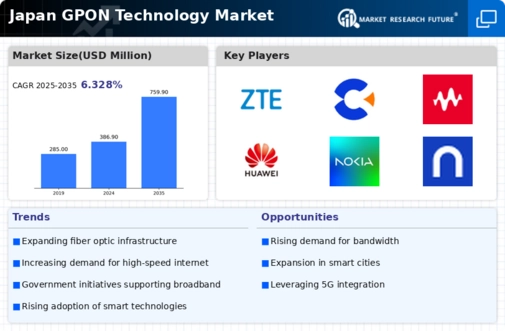The competitive landscape of the Japan GPON technology market is characterized by rapid advancements and significant investments in fiber-optic communication technologies aimed at enhancing broadband connectivity across urban and rural regions.This market is influenced by a growing demand for high-speed internet services, fueled by the increasing penetration of internet services in various sectors such as education, telecommunication, and entertainment.
As Japan strengthens its digital infrastructure, numerous players are vying for market share, focusing on developing innovative technologies, providing reliable services, and enhancing customer experiences. Factors such as government initiatives, technological developments, and the ongoing need for improved communication networks contribute to the competitive dynamics within the GPON technology sector.
ZTE has established a strong presence in the Japan GPON technology market through its commitment to providing high-performance optical networking solutions. The company has leveraged its advanced technology and extensive expertise in network infrastructure to cater to the growing demands for broadband services.
ZTE's strengths lie in its ability to deliver energy-efficient and innovative GPON systems that meet the needs of service providers in Japan. The company's focus on research and development has led to the introduction of cutting-edge products tailored for the local market, allowing ZTE to build strategic partnerships with operators and enhance the deployment of fiber-optic networks.This strong emphasis on technological advancement and local collaboration gives ZTE a significant competitive edge in the dynamic Japan GPON landscape.
Calix has also made noteworthy strides in the Japan GPON technology sector, establishing itself as a reliable provider of networking solutions. The company specializes in delivering advanced GPON systems and services that facilitate high-speed internet access and optimized network performance for service providers.
Calix’s presence in Japan is bolstered by its innovative product offerings, which are designed to enhance broadband services for diverse applications, including smart homes and IoT connectivity. The company's strengths include a strong focus on customer support and the ability to customize solutions based on local market needs.
Additionally, Calix has engaged in strategic partnerships and possible mergers with regional entities to better position itself within the Japanese market, reflecting its commitment to fostering growth and delivering value to its customers in the region. Through these initiatives, Calix continues to strengthen its foothold and reputation in the competitive landscape of Japan's GPON technology market.













